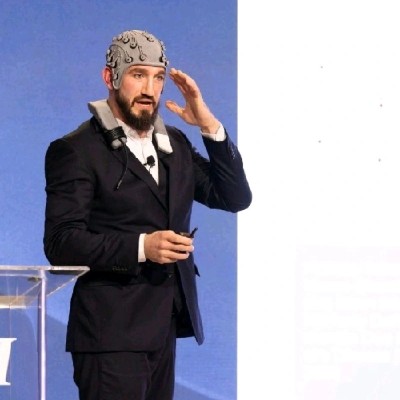- Video Library
- Alois Hopf, Bottneuro - Non-Invasive Custom Made tES/EEG Device | LSI USA '24
Alois Hopf, Bottneuro - Non-Invasive Custom Made tES/EEG Device | LSI USA '24

Alois Hopf
I am convinced that by expanding our knowledge about neurodegenerative diseases we are able to limit and counteract harmful disease progression. Therefore, I studied biotechnology to understand how biological systems work and how we can control them for our benefit. I graduated from ETH Zurich (M.Sc. ETH Zurich) in 2017, where I was taught scientific work on fundamental research. After graduation I joined the University Hospital of Basel for my PhD studies in regenerative neuroscience and graduated in 2022 (Dr.phil. University of Basel). During this time i've worked on two, clinically highly significant projects. These projects led to several publications, patents and finally to the incorporation of Bottneuro. Within Bottneuro, i'm currently working as CSO with the main goal to bring neuromodulation therapies forward to stop chronic neuroinflammation as driving factor in various neurodegenerative diseases such as Alzheimer's disease.
Alois Hopf
I am convinced that by expanding our knowledge about neurodegenerative diseases we are able to limit and counteract harmful disease progression. Therefore, I studied biotechnology to understand how biological systems work and how we can control them for our benefit. I graduated from ETH Zurich (M.Sc. ETH Zurich) in 2017, where I was taught scientific work on fundamental research. After graduation I joined the University Hospital of Basel for my PhD studies in regenerative neuroscience and graduated in 2022 (Dr.phil. University of Basel). During this time i've worked on two, clinically highly significant projects. These projects led to several publications, patents and finally to the incorporation of Bottneuro. Within Bottneuro, i'm currently working as CSO with the main goal to bring neuromodulation therapies forward to stop chronic neuroinflammation as driving factor in various neurodegenerative diseases such as Alzheimer's disease.

17011 Beach Blvd, Suite 500 Huntington Beach, CA 92647
714-847-3540© 2025 Life Science Intelligence, Inc., All Rights Reserved. | Privacy Policy







